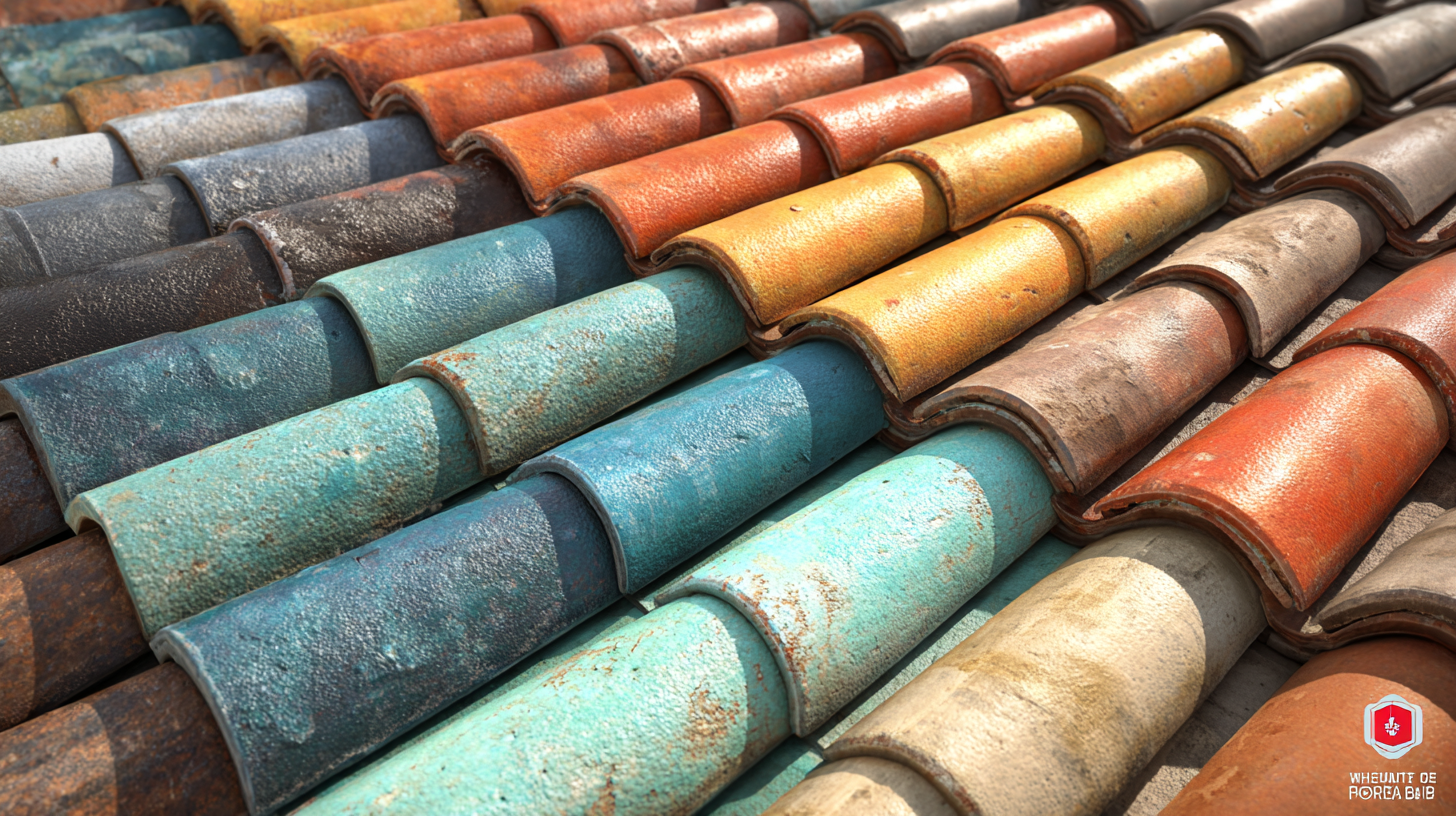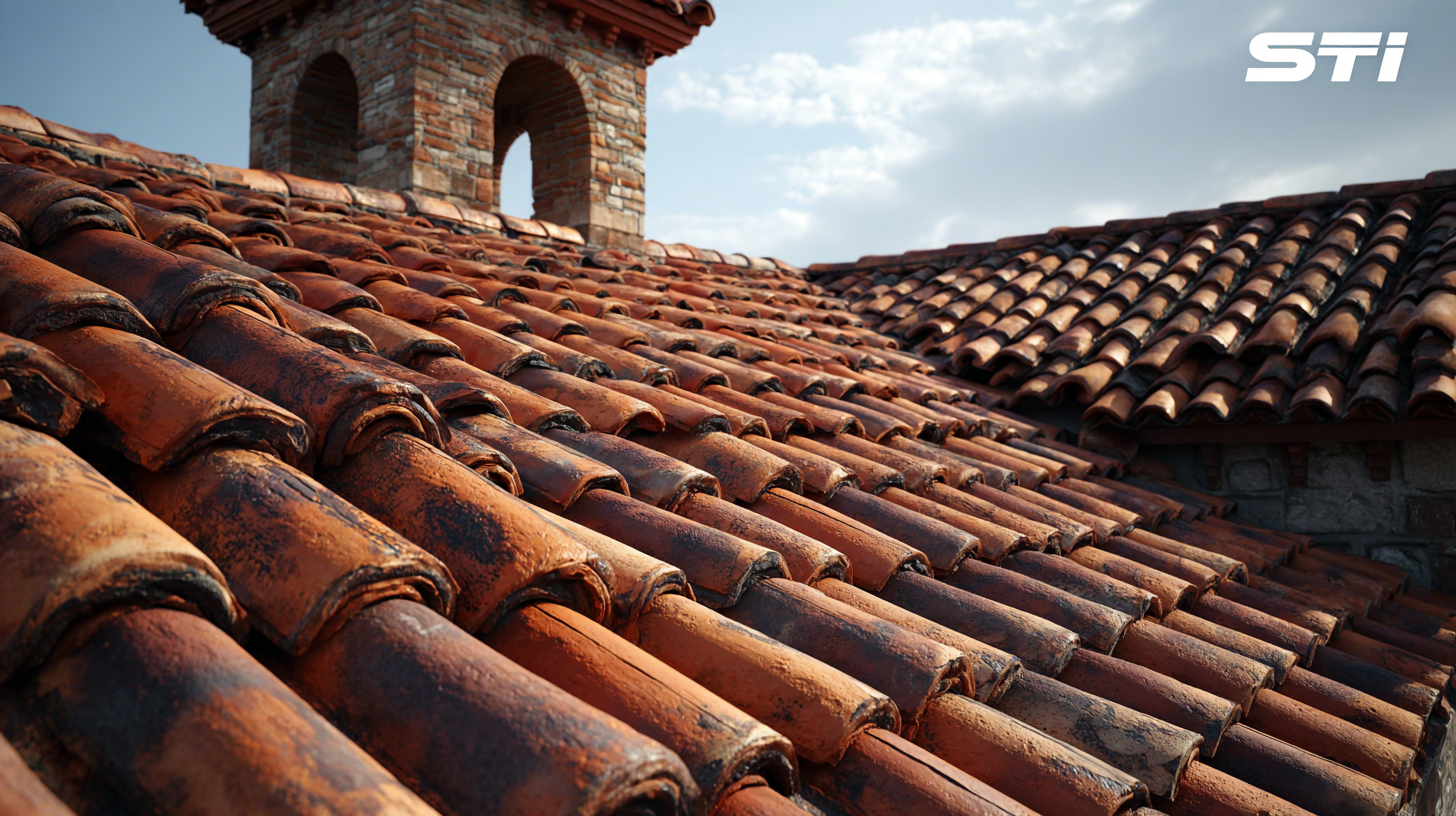
Leave Your Message
-
Phone
-
E-mail
-
Whatsapp

In the ever-evolving world of construction and architectural design, the choice of roofing materials plays a pivotal role in both aesthetic appeal and functional performance. Among these materials, roof tiles stand out for their durability, energy efficiency, and versatility, making them a preferred option across various climates and building styles.

According to a recent report by Research and Markets, the global roofing tiles market is projected to reach USD 45.5 billion by 2026, growing at a CAGR of 3.6%. This growth is driven by an increasing demand for sustainable construction practices and the integration of innovative roofing solutions.
As we delve into the unique features and applications of diverse roof tile types, this blog seeks to illuminate the critical role of roof tiles manufacture in providing high-quality, reliable products that meet the needs of modern construction while enhancing building longevity and performance.
Clay roof tiles have long been celebrated for their unique blend of aesthetic appeal and practicality. Historically, these tiles originated in ancient civilizations, where their durability and insulating properties made them a preferred choice. Even today, they offer remarkable longevity, often lasting more than a century. Their ability to withstand harsh weather conditions while providing natural thermal regulation is a significant advantage, allowing homes to maintain comfortable temperatures year-round without relying excessively on heating or cooling systems.
From a modern perspective, clay roof tiles continue to evolve with advancements in manufacturing technology. This evolution has not only enhanced their performance but also expanded their design possibilities, allowing homeowners to choose from a variety of colors, shapes, and finishes. The natural clay composition ensures sustainability, making them an eco-friendly option for contemporary homes. Additionally, their low maintenance requirements and resistance to fire and pests contribute to their growing popularity among architects and builders who seek both elegance and efficiency in roofing solutions.
Concrete roof tiles have gained popularity not just for their aesthetic appeal but also for their remarkable energy efficiency. These tiles are designed to reflect sunlight while providing excellent insulation, which helps to keep homes cool in the summer and warm in the winter. This thermal performance can significantly reduce the need for air conditioning and heating, leading to lower energy bills and a reduced carbon footprint.
**Tip:** When choosing concrete roof tiles, look for those with a high solar reflectance index (SRI). This rating indicates how well the tiles can reflect sunlight, which can greatly enhance energy efficiency in your home.
Another advantage of concrete roof tiles is their durability. They are resistant to fire, rot, and pests, which further enhances their energy-saving potential by ensuring that insulation materials remain intact and effective over time. Additionally, concrete tiles are available in a variety of styles and colors, allowing homeowners to select options that complement their architecture without compromising on performance.
**Tip:** Consider the installation of an underlayment beneath the concrete tiles, as this can provide extra insulation and help to improve the overall energy performance of your roof.

When it comes to roofing materials, slate roof tiles stand out for their remarkable durability and aesthetic charm. Slate is naturally resistant to harsh weather conditions, making it an ideal choice for homeowners looking for longevity and low maintenance. With a lifespan that can exceed a century, slate roofing not only provides lasting protection but also adds a unique architectural character to any home. The natural colors and textures of slate contribute to its timeless appeal, making it a favored option for those who prioritize both form and function in their roofing choices.
In addition to its inherent beauty and strength, slate roofing can align well with eco-friendly design trends. As sustainable building materials gain traction, slate emerges as a top contender due to its natural origins and minimal environmental impact during production. Unlike many modern roofing options that may rely on petrochemical inputs, slate is a renewable resource. Furthermore, innovative roofing systems are integrating slate with solar technologies, enhancing energy efficiency without compromising aesthetic values. This blend of durability, beauty, and sustainability makes slate roof tiles a compelling choice for today's environmentally-conscious homeowners.
When considering roofing options, a comparative analysis of metal roof tiles versus traditional tiles reveals a range of unique features and applications. Metal roof tiles are increasingly favored for their durability and energy efficiency. According to recent market trends, the roofing tiles market is projected to grow significantly, with clay and concrete tiles continuing to dominate, especially in residential applications. In contrast, metal tiles offer benefits such as lighter weight, easier installation, and a longer lifespan, which can be a game-changer for property owners looking for sustainable solutions.
In terms of value, metal roofing materials can be more cost-effective in the long run despite higher initial costs. The efficiency of metal tiles in reflecting heat can lead to reduced energy bills, an appealing trait for eco-conscious consumers. Traditional tiles, while aesthetically pleasing and available in a variety of styles, often incur higher maintenance costs over time. Overall, understanding these differences is crucial for making an informed decision that aligns with personal needs and preferences in roofing solutions.
As the modern roofing industry evolves, solar roof tiles have emerged as a sustainable solution that combines functionality with eco-friendliness. According to a report by the National Renewable Energy Laboratory (NREL), building-integrated photovoltaics (BIPV), such as solar roof tiles, can generate up to 70% more energy on-site compared to traditional roof designs. This energy production not only reduces reliance on fossil fuels but also leads to significant cost savings on electricity bills over time, illustrating an effective shift towards renewable energy sources.
Moreover, the environmental benefits of solar roof tiles are substantial. The International Energy Agency (IEA) estimates that widespread adoption of solar roofing technology could reduce global carbon emissions by 2.5 gigatons annually. This reduction is key to meeting international climate goals and enhancing energy efficiency in residential and commercial buildings. With advancements in technology and materials, solar roof tiles not only offer aesthetic appeal but also serve as a powerful tool in combating climate change, making them an increasingly popular choice among environmentally-conscious consumers and builders alike.
